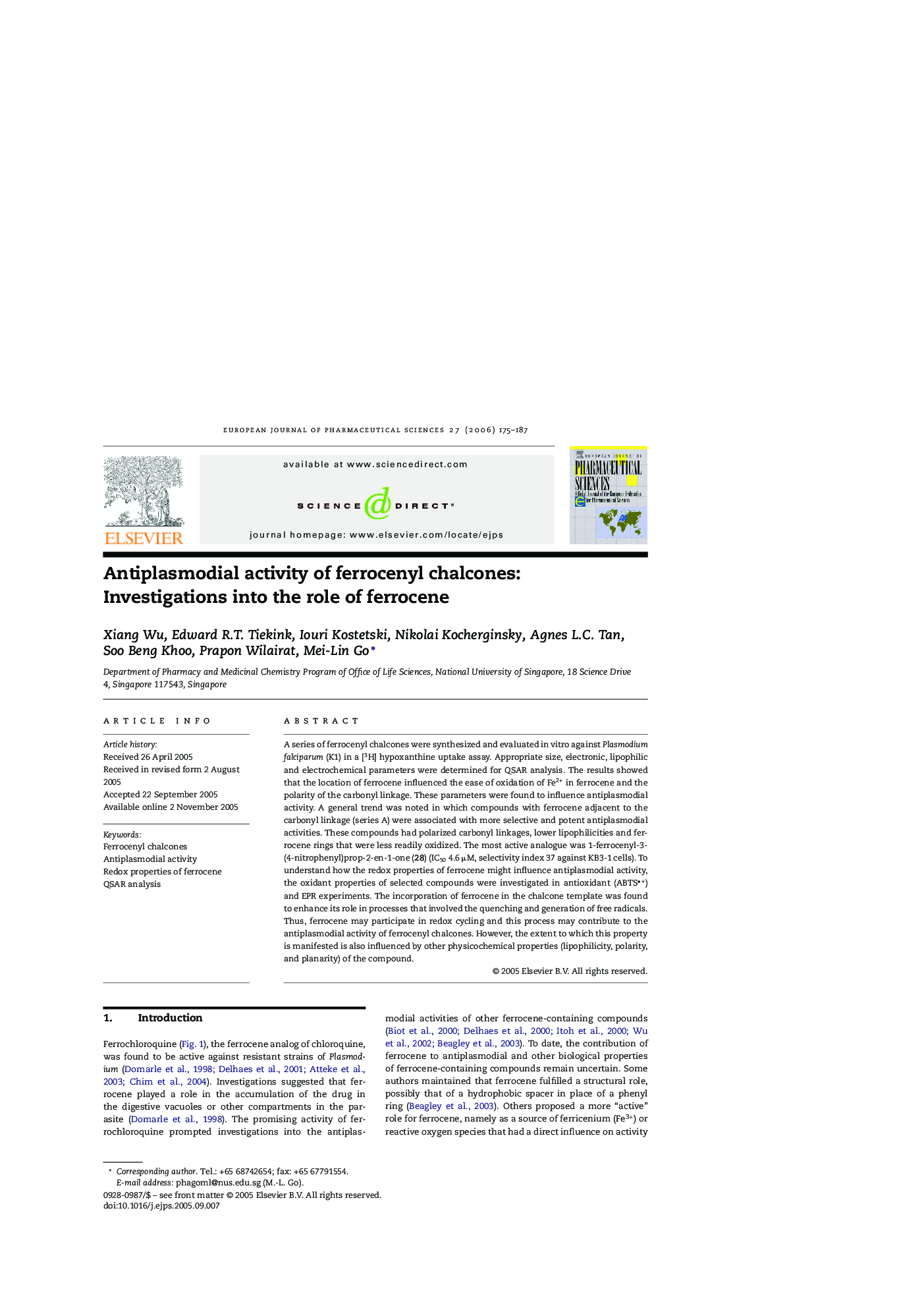| Article ID | Journal | Published Year | Pages | File Type |
|---|---|---|---|---|
| 2482531 | European Journal of Pharmaceutical Sciences | 2006 | 13 Pages |
A series of ferrocenyl chalcones were synthesized and evaluated in vitro against Plasmodium falciparum (K1) in a [3H] hypoxanthine uptake assay. Appropriate size, electronic, lipophilic and electrochemical parameters were determined for QSAR analysis. The results showed that the location of ferrocene influenced the ease of oxidation of Fe2+ in ferrocene and the polarity of the carbonyl linkage. These parameters were found to influence antiplasmodial activity. A general trend was noted in which compounds with ferrocene adjacent to the carbonyl linkage (series A) were associated with more selective and potent antiplasmodial activities. These compounds had polarized carbonyl linkages, lower lipophilicities and ferrocene rings that were less readily oxidized. The most active analogue was 1-ferrocenyl-3-(4-nitrophenyl)prop-2-en-1-one (28) (IC50 4.6 μM, selectivity index 37 against KB3-1 cells). To understand how the redox properties of ferrocene might influence antiplasmodial activity, the oxidant properties of selected compounds were investigated in antioxidant (ABTS+) and EPR experiments. The incorporation of ferrocene in the chalcone template was found to enhance its role in processes that involved the quenching and generation of free radicals. Thus, ferrocene may participate in redox cycling and this process may contribute to the antiplasmodial activity of ferrocenyl chalcones. However, the extent to which this property is manifested is also influenced by other physicochemical properties (lipophilicity, polarity, and planarity) of the compound.
